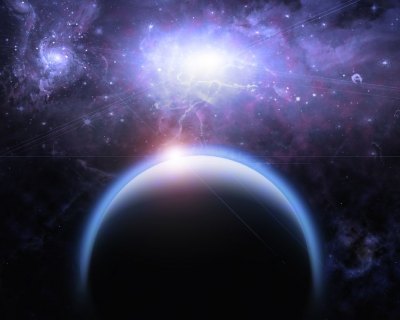Scientists close to finding life on other planets

Earth has not been colonized, in other words. Flying saucers do not dip into our atmosphere -- at least, as far as we know. And there is no documented contact with aliens. Even so, NASA scientists told a packed auditorium July 14 they continue to look for life on other planets.
As a onetime astronaut, Charles Bolden, director of NASA, remembers being asked about extraterrestrials. He never encountered them, Bolden said, but, “I would venture to say … that it is probably improbable in the limitless massiveness of the universe that we humans stand alone.”
Scientists believe they will prove just that. Never shy about employing dramatic techniques, NASA filled its program with music from 2001: A Space Odyssey, animated video and the words of the late Carl Sagan.
Mankind is on the cusp, perhaps in the next generation, of being able to answer the question: "Are we alone?" said John Grunsfeld, associate administrator for the science mission directorate at NASA and a five-time shuttle astronaut whose work involved making repairs to the Hubble Space Telescope.
Images from the Hubble routinely go viral, evidence of the public’s insatiable appetite to know more about space. But NASA’s newest prize, the James Webb Space Telescope will “transform our view of the universe,” Grunsfeld said.
“The James Webb Space Telescope may allow us to detect the presence of water on a very large planet, a rocky planet,” he explained. “To go to the next step, we want to look for bio-signatures not just of liquid water but of the gases in the atmosphere, perhaps leading to the discovery of life.”
Researchers have been experimenting with ways to block out bright starlight so they see only planetary light in telescopes. By dissecting light from a planet, scientists can look for signs of oxygen, carbon dioxide, sulfur dioxide from volcanoes and possibly signs of plant life.
They are examining planets that fall in the “habitable zone,” which NASA defines as the distance from a star where an orbiting planet’s surface temperature might be suitable for liquid water.
A steady drip of research points to the existence of more of those planets than previously thought. Indeed, scientists made news last year when they reported that 1 in 5 stars may have a planet in the habitable zone.
“Every star in the sky is a sun,” said Sara Seager, professor of planetary science and physics at the Massachusetts Institute of Technology. “And if our star has planets, we naturally expect those other stars to have planets also, and they do.”
It is also true that for the most part those planets are different from Earth. As part of the search for such planets, NASA plans to launch the Transiting Exoplanet Surveying Satellite (TESS) in 2017. The satellite will “look at hundreds of thousands of stars for thousands of planets,” Seager said.
Scientists expect to find small rocky planets transiting small stars. This will form a source list for the James Webb Space Telescope to look at in more detail, she explained.
But for all the excitement, scientists have reservations.
“We may find water. We may be really lucky,” said Matt Mountain, director of the Space Telescope Science Institute in Baltimore. “But to find evidence of actual life is going to take another generation of telescopes.”
Scientists will also need new rockets, new approaches to getting into space and highly advance optical systems, he went on. “But between science, NASA’s technology and today’s space enterprise it is within our grasp for the first time in human history to make a discovery that will change the world.”
Related:

